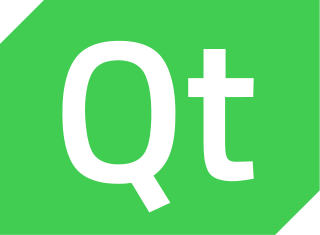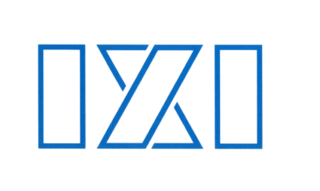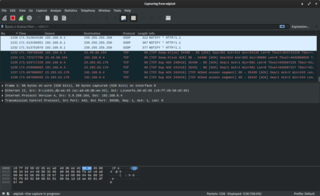Related Research Articles

Microsoft Office, or simply Office, is a family of client software, server software, and services developed by Microsoft. It was first announced by Bill Gates on August 1, 1988, at COMDEX in Las Vegas. Initially a marketing term for an office suite, the first version of Office contained Microsoft Word, Microsoft Excel, and Microsoft PowerPoint. Over the years, Office applications have grown substantially closer with shared features such as a common spell checker, OLE data integration and Visual Basic for Applications scripting language. Microsoft also positions Office as a development platform for line-of-business software under the Office Business Applications brand. On July 10, 2012, Softpedia reported that Office was being used by over a billion people worldwide.

Qt is a widget toolkit for creating graphical user interfaces as well as cross-platform applications that run on various software and hardware platforms such as Linux, Windows, macOS, Android or embedded systems with little or no change in the underlying codebase while still being a native application with native capabilities and speed.
HCL Notes and HCL Domino are the client and server, respectively, of a collaborative client-server software platform formerly sold by IBM, now by HCL Technologies.

Lotus Software was an American software company based in Massachusetts; it was "offloaded" to India's HCL Technologies in 2018.

Eclipse is an integrated development environment (IDE) used in computer programming. It contains a base workspace and an extensible plug-in system for customizing the environment. Eclipse is written mostly in Java and its primary use is for developing Java applications, but it may also be used to develop applications in other programming languages via plug-ins, including Ada, ABAP, C, C++, C#, Clojure, COBOL, D, Erlang, Fortran, Groovy, Haskell, JavaScript, Julia, Lasso, Lua, NATURAL, Perl, PHP, Prolog, Python, R, Ruby, Rust, Scala, and Scheme. It can also be used to develop documents with LaTeX and packages for the software Mathematica. Development environments include the Eclipse Java development tools (JDT) for Java and Scala, Eclipse CDT for C/C++, and Eclipse PDT for PHP, among others.

A/UX is Apple Computer's implementation of the Unix operating system for Macintosh computers, integrated with System 7's graphical interface and application compatibility. Launched in 1988 and discontinued in 1995 with version 3.1.1, it is Apple's first official Unix-based operating system. A/UX requires select models of 68k-based Macintosh with an FPU and a paged memory management unit (PMMU), including the Macintosh II, SE/30, Quadra, and Centris series. It was never the predecessor to macOS, a variant of UNIX currently bundled with Apple's desktop computers.

wxWidgets is a widget toolkit and tools library for creating graphical user interfaces (GUIs) for cross-platform applications. wxWidgets enables a program's GUI code to compile and run on several computer platforms with minimal or no code changes. A wide choice of compilers and other tools to use with wxWidgets facilitates development of sophisticated applications. wxWidgets supports a comprehensive range of popular operating systems and graphical libraries, both proprietary and free, and is widely deployed in prominent organizations.

IXI Limited was a British software company that developed and marketed windowing products for Unix, supporting all the popular Unix platforms of the time. Founded in 1987, it was based in Cambridge. The product it was most known for was X.desktop, a desktop environment graphical user interface built on the X Window System. IXI was acquired by the Santa Cruz Operation (SCO) in February 1993.

Fast Light Toolkit is a cross-platform widget library for graphical user interfaces (GUIs), developed by Bill Spitzak and others. Made to accommodate 3D graphics programming, it has an interface to OpenGL, but it is also suitable for general GUI programming.
The FOX toolkit is an open-source, cross-platform widget toolkit, i.e. a library of basic elements for building a graphical user interface (GUI). FOX stands for Free Objects for X.

Wireshark is a free and open-source packet analyzer. It is used for network troubleshooting, analysis, software and communications protocol development, and education. Originally named Ethereal, the project was renamed Wireshark in May 2006 due to trademark issues.

Infor is a multi-national enterprise software company, headquartered in New York City, United States. Infor focuses on business applications for organizations delivered via cloud computing as a service. Originally focused on software ranging from financial systems and enterprise resource planning (ERP) to supply chain and customer relationship management, in 2010 Infor began to focus on software for industry niches, as well as user-friendly software design. Infor deploys its cloud applications through Amazon Web Services, Azure and various open source software platforms.
Model–view–viewmodel (MVVM) is a software architectural pattern that facilitates the separation of the development of the graphical user interface – be it via a markup language or GUI code – from the development of the business logic or back-end logic so that the view is not dependent on any specific model platform. The viewmodel of MVVM is a value converter, meaning the viewmodel is responsible for exposing (converting) the data objects from the model in such a way that objects are easily managed and presented. In this respect, the viewmodel is more model than view, and handles most if not all of the view's display logic. The viewmodel may implement a mediator pattern, organizing access to the back-end logic around the set of use cases supported by the view.

GTK is a free and open-source cross-platform widget toolkit for creating graphical user interfaces (GUIs). It is licensed under the terms of the GNU Lesser General Public License, allowing both free and proprietary software to use it. It is one of the most popular toolkits for the Wayland and X11 windowing systems.
The Zinc Application Framework is an application framework, intended for the development of cross-platform software applications with graphical user interface (GUI), using a widget toolkit. Zinc targets both embedded and desktop platforms.
Neuron Data is an American software development company that was founded June 1985 by Alain Rappaport, Patrick Perez and Jean-Marie Chauvet. Their first product, Nexpert, was a C-based forward chaining expert system shell for the Macintosh in 1985. The product was ported to the PC, one of the first programs to run under the then nascent Windows. Under the name Nexpert Object, it was ported to VAX VMS and all flavors of UNIX workstations, as well as on IBM mainframes. In 1991, Neuron Data released a GUI building tool named Open Interface. The Open Interface Elements development tool won the 1995 Editor's Choice Award from X Journal for the Best Cross-Platform Toolkit.
The Application Programming Interface for Windows (APIW) Standard is a specification of the Microsoft Windows 3.1 API drafted by Willows Software. It is the successor to previously proposed Public Windows Interface standard. It was created in an attempt to establish a vendor-neutral, platform-independent, open standard of the 16-bit Windows API not controlled by Microsoft.
Idera, Inc. is the parent company of a portfolio of brands that offer B2B software including database tools, application development tools, test management tools, and DevOps tools. It is headquartered in Houston, Texas and has offices in Australia, Austria, and the United Kingdom. It is owned by the private equity firms HGGC, Partners Group and TA Associates.

Telerik AD is a Bulgarian company offering software tools for web, mobile, desktop application development, tools and subscription services for cross-platform application development. Founded in 2002 as a company focused on .NET development tools, Telerik now also sells a platform for web, hybrid and native app development.
Tactician Corporation is a developer and provider of GIS desktop software, SaaS web software, and business intelligence consulting services internationally. The company has its headquarters in Andover, Massachusetts.
References
- 1 2 3 Martin Marshall (18 March 1991). "Open Interface Grants Programmer's Wishes". InfoWorld. InfoWorld Media Group, Inc.: 68. ISSN 0199-6649 . Retrieved 18 August 2011.
- ↑ Kremer, Rob. "Practical Software Engineering". 451 Human Factors. Retrieved 18 August 2011.
- ↑ "HCL Presenter5". Archived from the original on 2013-08-13. Retrieved 2021-05-20.
- ↑ "Neuron Data wins cross-platform race: OPEN INTERFACE earns The X Journal 1995 Editor's Choice Award; Neuron Data posts record revenues with proven, customizable tools for developing business-critical applications". AllBusiness.com . May 2, 1995. Retrieved 18 August 2011.